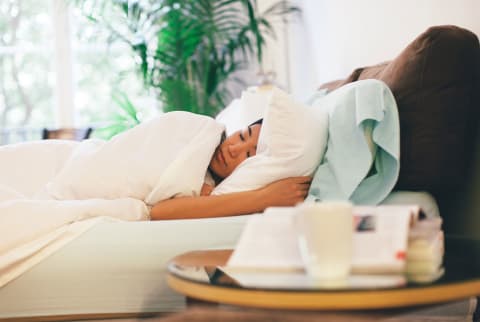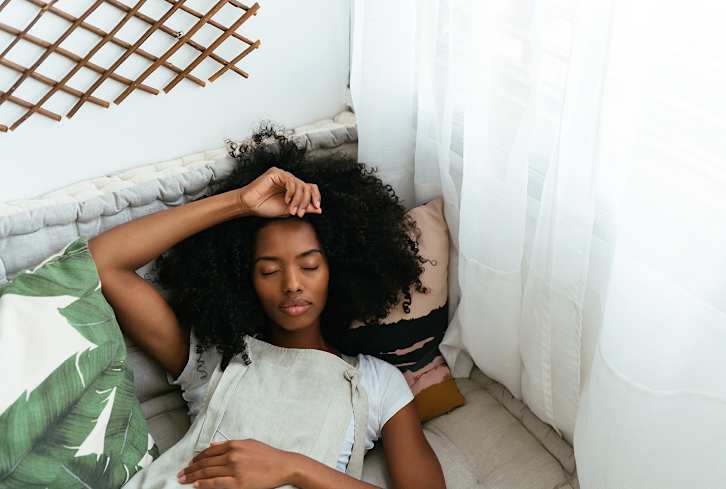Advertisement
Why You Should Be Sleeping On Your Right Side For Brain Health


Whether you're a back sleeper, a side sleeper, or a stomach sleeper, you might be surprised to know that your sleeping posture can actually impact your brain health (not to mention how your body feels in the morning).
And according to neuroscientist Tara Swart, M.D., Ph.D., there's one way to sleep that's better for your noggin than others. Here's what to know.
The connection between sleep posture and brain health
As Swart wrote in her contribution to mbg's series The Wind Down, her go-to's for sleep hygiene include having a regular bedtime and wake time, taking magnesium bath soaks a few times a week, and doing a little pre-snooze aromatherapy. Swart also swears by a simple sleep hack for brain health: sleeping on your side.
She notes that sleeping on your side is more efficient for glymphatic cleansing (basically, when your brain flushes out waste products) overnight. Furthermore, sleeping on your right side, if you can swing it, has been shown in research to best support this cleanup process.
One 2020 study published in the journal Brain Sciences1, for example, notes that glymphatic transport is most efficient in the right lateral sleeping position, with more cerebrospinal fluid clearance (read: brain waste flushing) occurring compared to lying on your back or stomach.
The study concludes that adopting this sleep position could therefore support brain health as you age and serve as a preventive measure against neurodegenerative diseases like Alzheimer's.
"It is interesting that the lateral sleep position is already the most popular in human and most animals—even in the wild—and it appears that we have adapted the lateral sleep position to most efficiently clear our brain of the metabolic waste products that built up while we are awake," study author Maiken Nedergaard, Ph.D., says in a statement.
Side sleeping also tends to help prevent snoring compared to back sleeping (since it opens up your nasal passages), and it can be more comfortable for the back and shoulders. To stay in this position overnight, Swart relies on a specially designed pillow. If you're in the market for one, here are our top picks.
The takeaway
If you're looking for an easy way to support your brain health while you sleep, get used to sleeping on your right side. The good news is, with tons of pillows and mattresses designed specifically for side sleepers on the market, you can be snoozing like a neuroscientist in no time.

5 Subtle Signs You Might Be Low In Omega-3 Fats & What To Do About It
Molly Knudsen, M.S., RDN

This Antioxidant-Rich Fruit Is A+ For Sleep & Recovery, Research Shows
Molly Knudsen, M.S., RDN

5 Subtle Signs You Might Be Low In Omega-3 Fats & What To Do About It
Molly Knudsen, M.S., RDN

This Antioxidant-Rich Fruit Is A+ For Sleep & Recovery, Research Shows
Molly Knudsen, M.S., RDN

5 Subtle Signs You Might Be Low In Omega-3 Fats & What To Do About It
Molly Knudsen, M.S., RDN

This Antioxidant-Rich Fruit Is A+ For Sleep & Recovery, Research Shows
Molly Knudsen, M.S., RDN

5 Subtle Signs You Might Be Low In Omega-3 Fats & What To Do About It
Molly Knudsen, M.S., RDN

This Antioxidant-Rich Fruit Is A+ For Sleep & Recovery, Research Shows
Molly Knudsen, M.S., RDN














